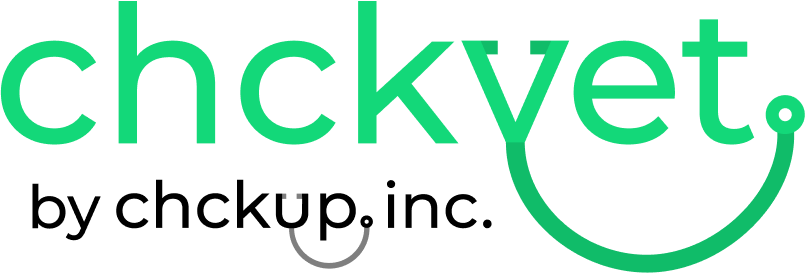The Business Truth Hiding in Your PIMS
Rhys Giannarelli
Jun 2, 2025 · 5 min read

If you own a suitcase, you’re showing your age. Joking. If you’re like me, I saw my father carry his for most of his business life.
We’ve all heard the saying, you can’t fix what you can’t measure. It’s one of those universal business truths that gets thrown around a lot, and for good reason. It’s as relevant today as ever. But in veterinary medicine, we still see a pattern that hasn’t quite broken. Too many practices are making decisions based on gut instinct, on vague impressions, or what someone thinks is happening. The problem with that approach is that it’s built on assumption, not evidence. And that’s a risky place to operate from. It’s not strategy. It’s guesswork.
When I work on setting yearly budgets with clients, I ask them about certain data points. When you see the deer in the headlights look, you know they’ve been making every decision based on how they felt last week, last month, or last year. Here’s the thing. What they often feel is not always practice related. It’s human nature to bring outside stress into the workplace. Concerns from home, family issues, kids’ school holiday planning. What they feel is not true or concise.
When I think about my father and his ten-year-old hard-shell black leather briefcase, peeling at the sides and flaking in other areas, it had everything he needed to run the show. Reports, invoices, notes, projections maybe, though I doubt it, and a list of suppliers. If he needed to make a decision, he would open that suitcase and sift through the contents. It was his portable command center. His entire business lived inside that case.
But the problem was, the suitcase was only as good as what was inside it. And often, it wasn’t kept current. Papers would get missed. Things wouldn’t get filed. Numbers weren’t always updated. Eventually, the decisions he made weren’t based on live, accurate data. They were based on memory. They were based on how things felt last month or last year. And while those instincts can sometimes serve us, they are no substitute for the truth.
Many veterinary practice owners are still doing the same thing today. The only difference is, the suitcase has changed. It’s no longer made of leather with a combination lock and a squeaky handle. Now it lives on your desktop. It lives inside your practice management software.
Your PIMS is your suitcase.
Your Practice Information Management System holds every single thing you need to evaluate the health of your business. It is not just a tool for scheduling or billing. It is not just a digital calendar or client contact log. It is the most underutilized business resource in your clinic. It tracks revenue patterns. It shows you your appointment flow. It highlights patient visits, client retention, service trends, staff productivity, compliance rates, and more. It even gives you insight into how effective your reminders are, how long your inventory is sitting on shelves, and which team members are the most efficient on the floor.
Everything you need to lead with clarity is already there.
And yet, we keep running clinics based on how we feel. We feel like we are slammed. We feel like we are doing well this quarter. We feel like clients are happy. But when you pop the suitcase open and look at your data, you might find the truth is a little different.
You might see that appointments are up, but the average transaction value is trending down. You might find you are gaining lots of new clients, but many of them are not returning after the first visit. You might discover your team is burning out, not because of long hours, but because of inconsistent systems, missed opportunities, or inefficient scheduling. Your PIMS does not care how you feel. It does not come with a bias or emotional filter. It tells you what is actually happening in real time. And that is a gift. Because when you base your decisions on clear, consistent, measurable data, you make smarter moves. You create better outcomes. You stop reacting and start projecting. You start leading.
The cost of not using your PIMS properly is hard to measure because it accumulates slowly. Practices that ignore their data or do not use it well tend to operate in a reactive mode. They spot issues only after they become full-blown problems. They miss trends in client behavior. They make personnel decisions based on perception rather than performance. They misjudge capacity, overspend on inventory, undercharge for services, or lose revenue simply by not noticing the gaps.
In the short term, it may look like things are okay. But over time, the damage adds up. Morale drops. Profitability shrinks. Growth stalls.
Every practice is different, and the metrics you watch may vary. But there are a few universal numbers that no clinic should ignore. You should know how many active clients you have, and how often they visit. You should be tracking the uptake rates of key services like dental cleanings, diagnostics, and preventives. You should know what your average revenue per appointment is, and how that has changed over the past six or twelve months. You should know your reminder response rate and the shelf life of your inventory. You should be looking at individual doctor production and how efficiently each provider’s schedule is being filled.
These are not just stats. They are breadcrumbs that lead to better decisions.
So I ask you this. When is the last time you sat down with the numbers and asked them to show you the truth? Not glanced at the weekly revenue total. Not skimmed the appointment calendar. But really dove into the data and let it challenge what you thought you knew. If you are not doing this regularly, you are leaving clarity on the table. You are carrying a suitcase full of useful information but never checking what’s inside. And in doing so, you are operating on partial vision.
It is easy to avoid the data because it can be confronting. And I know many people who avoid the truth because the narrative they tell themselves helps them sleep at night. But the longer you avoid it, the further you drift from control. And let’s be honest, most of us opened a practice because we wanted more control, not less.
You do not need a fancy MBA to use your PIMS effectively. You just need curiosity, consistency, and the willingness to ask better questions. The answers are already in the suitcase.
You can’t fix what you can’t measure. But good news. You already have the tools. All you have to do is open the suitcase.
Are you a veterinary professional?
If you're in the veterinary field and you're interested in giving your practice the extra hands it desperately needs, book an 8 minute demo with Chckvet. Our platform helps busy practices handle call overload, boost revenue per client, and increase client satisfaction by providing actionable insights and easy-to-use technology to help you stay on top of everything.
Book an 8 minute demo
Looking for a better solution?
Discover how Chckvet can help fill your schedule and give your team their time back.
